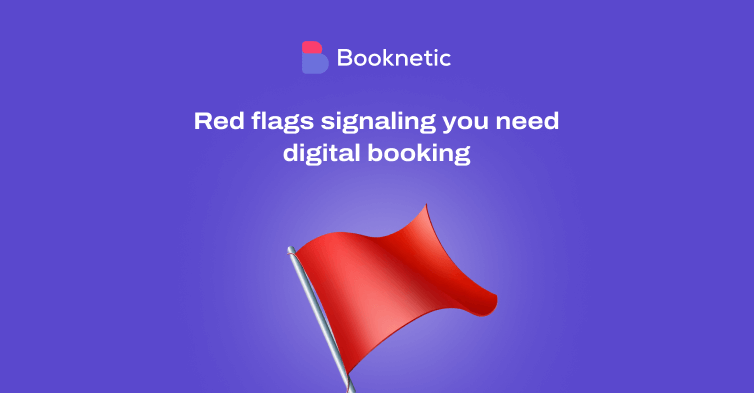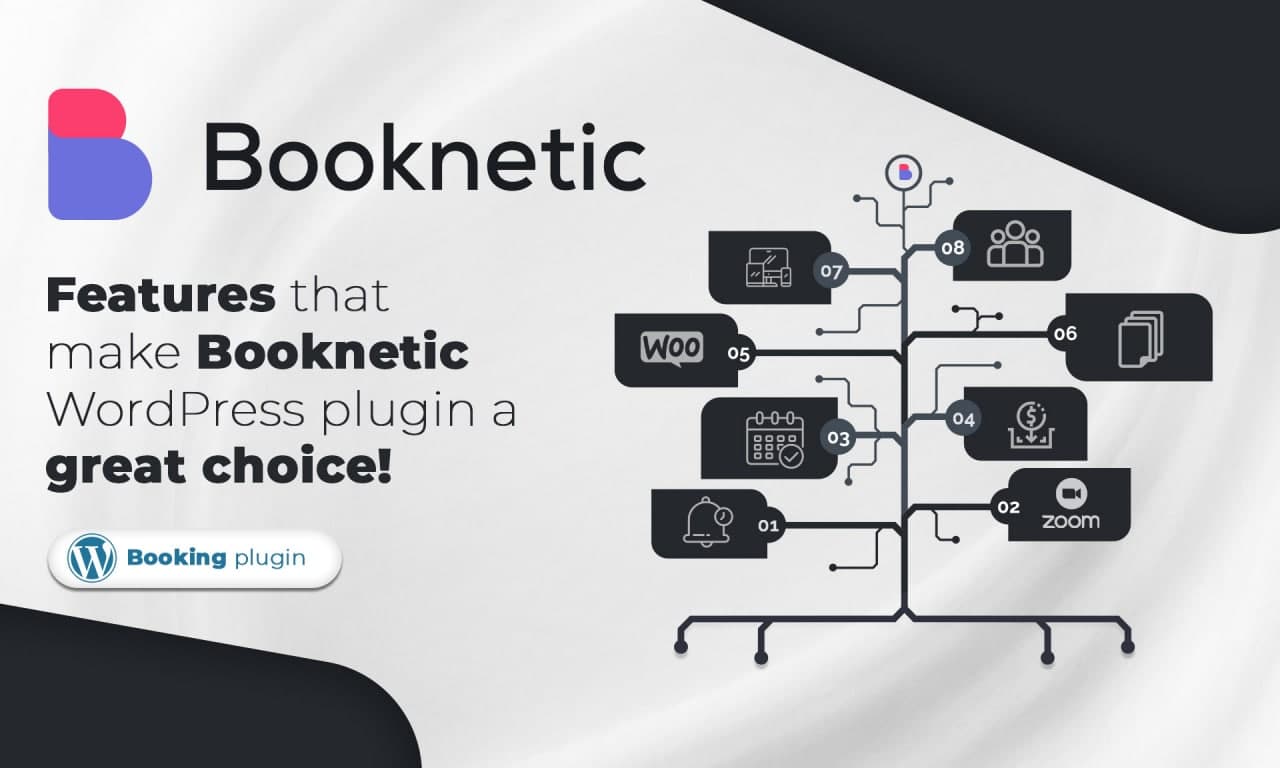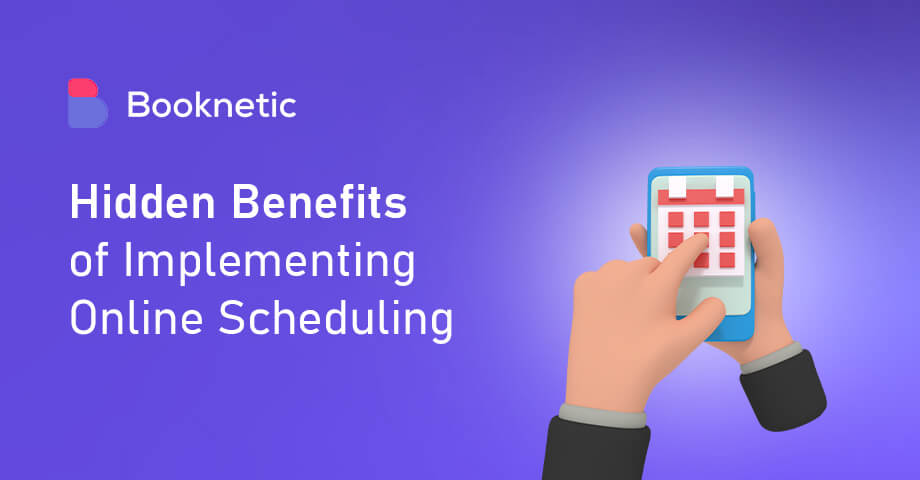In today’s tech-driven world, modernizing business operations is essential if you want to survive and thrive. This is especially true for service-oriented businesses where efficiency and customer satisfaction are key to success. One key way to stay ahead is by adopting digital booking solutions. But what exactly is this concept, and why is it crucial?
In this article we aim to mention common signs that may signal your business needs to embrace online booking technology. If your business faces challenges like scheduling errors, high no-show rates, or overwhelmed administrative staff, it’s time to consider the benefits of it.
What is Digital Booking?
So, what is it? In simple terms, digital booking refers to software or online platforms that allow customers to schedule appointments or services effortlessly, without the need for manual input from business staff.
These systems work in real-time, updating and syncing appointment calendars automatically.
Types of service-oriented businesses that benefit include salons, healthcare clinics, spas, repair services, and even education centers offering coaching or classes.
Why is Digital Booking Essential in Today’s Market?
In the current market, consumer expectations are higher than ever. People are accustomed to the convenience of being able to book services anytime, from anywhere. For example, in the online travel market, 68% of the revenue comes from online bookings.
When choosing service providers, factors like ease of scheduling can heavily influence consumer decisions. Convenience has become a primary driver of customer loyalty, and businesses that can’t keep up may risk losing clients to more tech-savvy competitors. Your aim is not only modernizing your operations but it is also following the money, not falling behind your competitors and providing an excellent customer experience.
Red Flag #1: Constant Scheduling Errors and Double Bookings
One of the clearest indicators that your business might need a digital scheduling solution is the frequency of scheduling errors and double bookings . Traditional scheduling methods, like manual appointment books or basic spreadsheets, are prone to human error.
Even a simple mistake—like writing the wrong date or overlooking an already booked slot—can lead to problems. Double bookings frustrate customers, damage your reputation, and ultimately result in customer dissatisfaction.
Consider the ripple effect: if a loyal client arrives for an appointment only to find out there’s been a mix-up, they may think twice before returning.
Repeated errors drive away new business and result in lost revenue. Digital appointment systems prevent these problems by automating the scheduling process and reducing the risk of overlapping appointments.
Red Flag #2: Customers Frequently Complain About Inconvenient Booking Options
If your customers often voice frustrations about inconvenient booking options, it’s a major sign that your business needs to adapt. Relying solely on phone or in-person bookings can create unnecessary hurdles for people who value flexibility.
Today’s consumers expect to have the option of scheduling appointments at their convenience—whether it’s during off-hours or from the comfort of their own homes.
Limiting booking options to traditional methods can negatively impact the overall customer experience.
People want to make appointments quickly, without waiting on hold or playing phone tag with staff. Digital scheduling gives your business a competitive edge by showing you are attuned to your customers’ needs. When people can book services easily, they are more likely to become repeat clients.
Red Flag #3: High Rate of No-Shows and Last-Minute Cancellations
A high volume of no-shows and sudden cancellations can be incredibly damaging to your business’s bottom line. Missed appointments translate into lost revenue and wasted time, especially if you had reserved slots that could have been filled by paying customers.
While it’s normal for some cancellations to occur, an excessively high rate can signal that your current scheduling system is not doing enough to mitigate this issue.
This is where digital scheduling solutions shine. Many platforms come equipped with features that help reduce cancellations. Automated reminders sent via email or SMS ensure that clients are less likely to forget about their appointments.
Additionally, digital scheduling solutions can implement policies like requiring prepayments or deposits , which discourage last-minute cancellations. These small but effective measures can significantly improve your attendance rates and ensure that your schedule runs smoothly.
Moreover, automated systems also give you the flexibility to offer waiting lists or last-minute booking options, allowing you to fill empty slots more efficiently. Ultimately, investing in a robust booking platform minimizes disruptions and protects your revenue.
Red Flag #4: Administrative Staff Are Overwhelmed with Scheduling Duties
If your administrative staff seems buried under the weight of manual scheduling, it’s a clear indication that your business could benefit from automation. Time spent juggling appointments, answering booking-related calls, and managing changes could be better allocated to tasks that directly impact business growth, like customer service or operational improvements.
Manual scheduling not only takes up valuable staff hours but also increases the chance of errors and inefficiencies. Overworked employees are more prone to making mistakes, which can lead to scheduling conflicts and unhappy customers. Additionally, staff inefficiency can become a hidden cost, draining resources without you even realizing it.
With a digita appointment booking system, administrative tasks become more manageable. Automated scheduling reduces the administrative burden by streamlining the entire process, from booking to follow-up.
Your team will spend less time on repetitive tasks and more time on essential activities, enhancing overall productivity.
Red Flag #5: Limited or No Data Insights on Customer Booking Trends
Another sign that your business needs to invest in digital booking is the lack of access to data insights on booking patterns and customer behavior.
When using traditional scheduling methods, collecting and analyzing data can be challenging, if not impossible. This means you miss out on valuable insights that could help you make data-driven decisions to improve your services and overall customer experience.
With a digital booking system, you gain access to detailed analytics, such as peak booking times, popular services, and customer demographics. Understanding these trends usually results in noticing some trend, or a peculiar information that you can then use to create something unique.
This data can also show you areas of growth or services that may need improvement. Ultimately, these data insights enable your business to stay agile and responsive to customer needs, setting you apart from competitors still using outdated methods.
Without these insights, you’re essentially operating blind, missing opportunities to optimize your operations and deliver better service. A good platform brings clarity and allows you to see potential threats and incoming opportunities.
Red Flag #6: Business Growth is Stunted by Poor Scalability
If you find that your business struggles to grow efficiently due to limitations in your current scheduling system, you’re facing a scalability issue.
Manual scheduling methods become increasingly cumbersome as your business expands. The more clients and services you have, the harder it becomes to manage everything without errors or delays. This lack of scalability can hinder your business’s ability to reach its full potential.
Digital booking systems are designed to support business growth. As your customer base increases, a digital solution can effortlessly handle higher booking volumes without added strain on your administrative staff.
You can also customize these platforms to accommodate new services, locations, or staff members, ensuring that your operations remain smooth and organized.
In essence, a scalable booking solution helps future-proof your operations, ensuring that as demand grows, you’re fully equipped to handle it. This scalability means fewer growing pains and more opportunities to capitalize on your business’s upward trajectory.
Red Flag #7: Competitors Have Already Adopted Such Solutions
If your competitors are already using digital solutions, it’s a strong indication that you might be falling behind.
Businesses that offer easy, efficient booking options often gain a significant competitive edge.
Potential customers may choose your competitors simply because their booking process is simpler and more reliable.
The risk of not adapting to digital booking extends beyond lost revenue. It also impacts your brand reputation and market position. Being seen as outdated or hard to work with can damage your image, especially if your competitors are known for their modern, streamlined systems.
On the other hand, implementing an appointment booking platform can not only help you catch up but also allow you to offer new features, like 24/7 appointment scheduling and personalized customer experiences.
Adopting a digital solution can be a game-changer, increasing your market share and helping your business stay competitive. It’s no longer a luxury but a necessity to keep up with industry standards and meet evolving customer expectations. In today’s digital landscape, adapting early is the key to long-term success.
How to Transition to a Digital Booking System
If you recognize some or all of these red flags in your business, it’s time to consider a transition to digital booking. Shifting to a new system is a hard process, we know it better than anyone as we have first-hand experience of transferring 10,000+ customers to digital scheduling.
But we also know that with the right approach, it can be easy to adapt. Here’s how to get started:
Steps to Successfully Implement Digital Booking Solutions
Assess Your Current Booking Process
Research and Choose the Right Platform
Note: Our product, Booknetic, might be a good starting point if you are looking for an ideal solution, check out our guide to find about more on Booknetic’s benefits.
Train Staff and Ensure a Smooth Transition
To Conclude
Now is the moment to evaluate your booking operations and consider how a digital solution could transform your business.
Booknetic’s process modernization simplifies daily operations and positions your business for future success. Don’t let outdated scheduling practices hold you back—take a step towards a more organized, efficient, and customer-friendly - better future.




